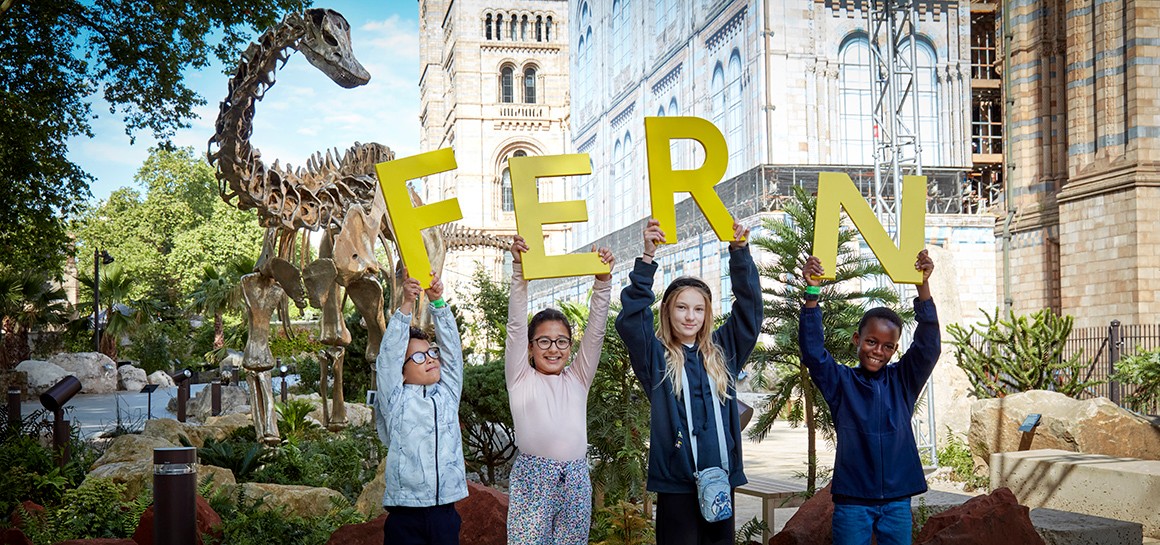Natural History Museum London reveals Latest Dinosaur Resident in its New Gardens

The Natural History Museum’s transformed gardens will welcome visitors from 18 July. Fern, a brand-new bronze Diplodocus, takes pride of place in a Jurassic landscape. The gardens will also be one of the most intensively studied urban nature sites globally, as part of the Museum’s national biodiversity movement
From Thursday 18 July, the Natural History Museum’s reimagined gardens will open their gates. Visitors can explore, rest and connect with urban nature in the free-to-visit green space in the heart of London this summer.
To mark their opening, a stunning new bronze cast of the Museum’s much-loved Diplodocus has today been unveiled, standing proud within the gardens. Following much speculation, the new dino resident’s name Fern was revealed by local school children. Fern is supported by Kusuma Trust.
The five acres of green space wrapping around the Museum’s much-loved building have been transformed into two outdoor living galleries ripe for exploration: the Nature Discovery Garden supported by the Cadogan Charity and the Evolution Garden.
Creating a sustainable design that works with the landscape and taking an ambitious approach to sustainable construction – from a diesel-free site and no waste sent to landfill to harvesting rainwater for the plants – has been at the heart of the redevelopment. The Museum’s Wildlife Garden was extended to double the area of native habitats within the grounds and the pond area has been increased by 60%, to better support the animal and plant life diversity.
In the Evolution Garden, discover a journey from deep time to modern day. Learn about 2.7 billion years of history of our planet, told through the immersive timeline of plants, rocks of different geological periods from across the UK, and gleaming representations of reptiles, birds and mammals.
The Evolution Timeline, supported by the Evolution Education Trust, begins with an awe-inspiring canyon clad in ancient stone from Scotland.
As visitors emerge from the canyon into the Evolution Garden, they will be greeted by the graceful gaze of Fern. Don’t miss the garden’s second bronze dinosaur at Fern’s side, Hypsilophodon which was native to the UK. Both dinosaurs stand within the Jurassic Garden also supported by Kusuma Trust.
Benches nestled in the landscape throughout the gardens encourage visitors to take a moment to relax and enjoy the gardens. The Garden Kitchen, opening later this year, will also provide a welcome cafe break.
The Nature Discovery Garden is a space for visitors and scientists alike to find out more about the extraordinary wildlife on our doorsteps today.
Different habitats represent the rich biodiversity that can be found in the UK’s urban spaces. An accessible sunken pathway winds between the ponds, where frogs, newts, dragonflies and mandarin ducks have already been spotted making themselves at home.
As part of the garden, the Nature Activity Centre supported by Amazon Web Services (AWS) is a purpose-built space for learning about the urban nature on our doorstep. It combines facilities for scientific work, a training space for future urban ecologists and a hub for school workshops and family activities in the gardens.
Main Image: The Natural History Museum unveils Fern the much-anticipated bronze Diplodocus supported by Kusuma Trust in the newly transformed gardens. © The Trustees of the Natural History Museum, London
